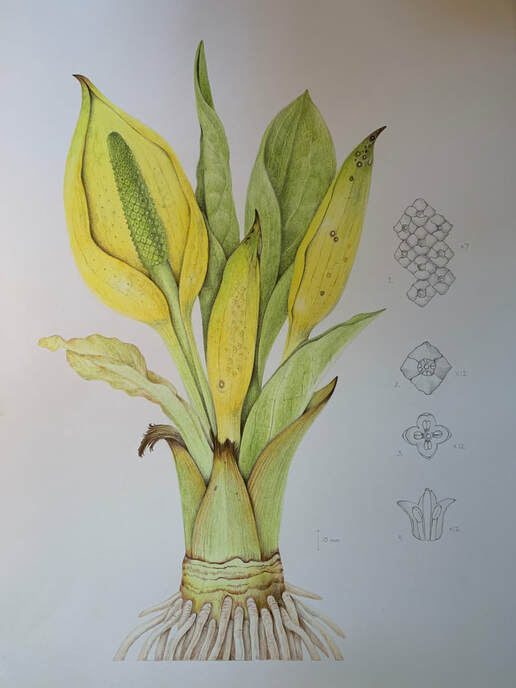Bears coming out of hibernation in spring love to eat the roots and leaves of the skunk cabbage, although I have never seen bears around eating them. Also elk supposedly eat the roots as well. Skunk cabbage is pollinated by beetles and flies. I do see lots of tiny beetles and flies on the spadix often.
Skunk Cabbage has some interesting historical usage by Native People. Native Americans have used skunk cabbage as both food and medicine. The poultice of fresh leaves was used to treat burns, sores, boils and swelling. Poultice was also used to treat bronchitis by applying it to the chest. Cooked skunk cabbage roots have also helped Native Americans survive during times of famine. The roots have to be cooked thoroughly because they contain calcium oxalate and can be poisonous. Another interesting use of skunk cabbage is the use of leaves as modern wax paper, to separate or serve food or to wrap food to be cooked. Salmon was often wrapped in skunk cabbage leaves and cooked or steamed in pits. Modern herbalists also recommend skunk cabbage for cough, flu and bronchitis.
For this illustration I did many sketches outside, cut a flower and worked on it in my studio, and dug up the roots which I replanted later. Observing the structure of the individual flowers under a magnifying lens was very interesting.

 RSS Feed
RSS Feed